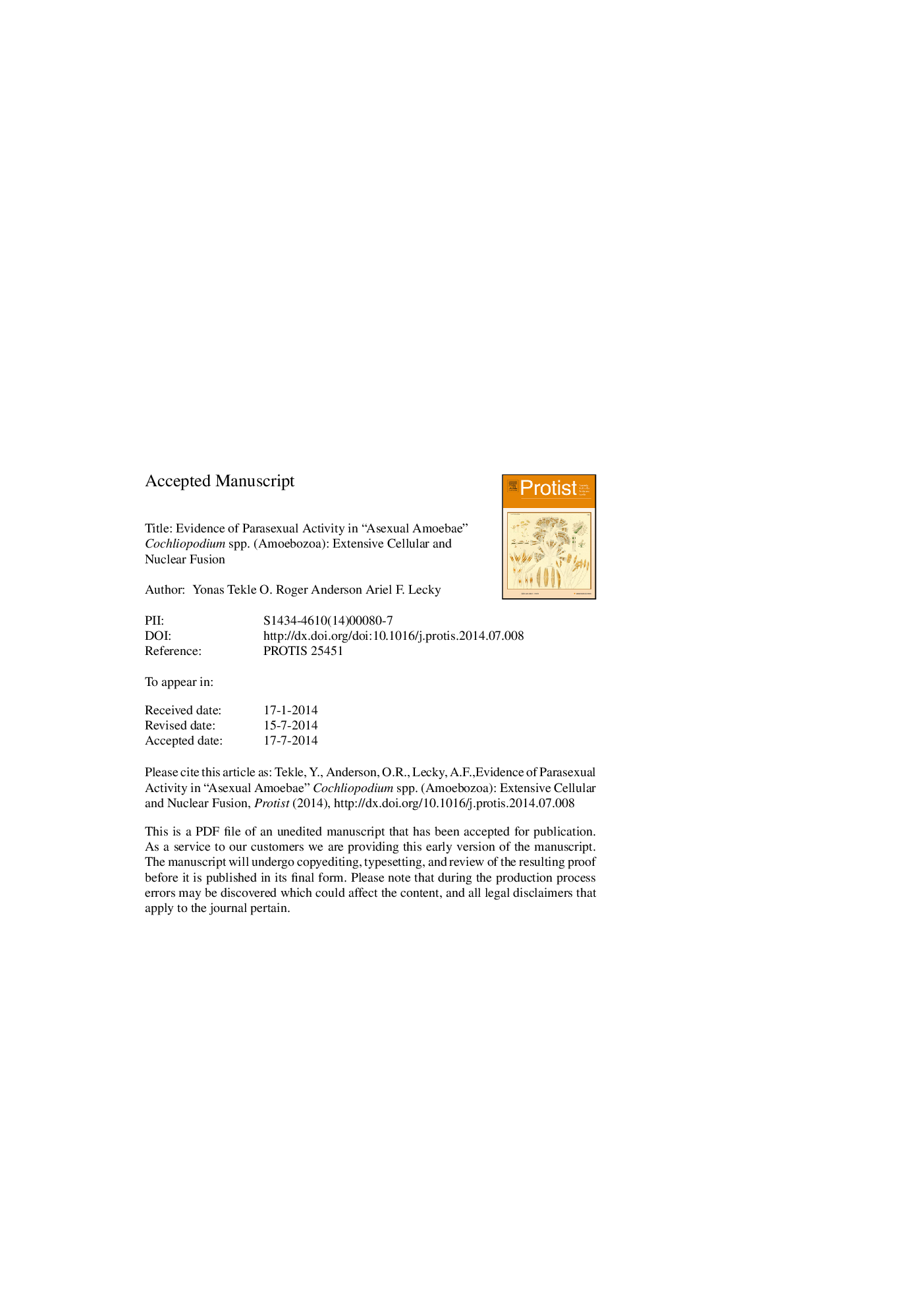| Article ID | Journal | Published Year | Pages | File Type |
|---|---|---|---|---|
| 10878973 | Protist | 2014 | 30 Pages |
Abstract
The majority of microbial eukaryotes have long been considered asexual, though new evidence indicates sex, or sexual-like (parasexual) behaviors that deviate from the usual union of two gametes, among other variant aspects. Over a dozen amoebozoans are implicated to have sexual stages. However, the exact mechanism by which sex occurs in these lineages remains elusive. This is mainly due to the diverse quality and cryptic nature of their life cycle. In this study we present evidence of some previously unreported aspects of the life cycle of an amoeba, Cochliopodium, that undergoes unusual intraspecific interactions using light microscopy and immunocytochemistry. Similar to other amoebozoans, Cochliopodium, is considered asexual with no published reports of sex or parasexuality. We also investigated environmental conditions that govern the observed intraspecific interactions. Both light microscopic and immunocytochemistry evidence demonstrates Cochliopodium undergoes cellular fusion (plasmogamy) and nuclear fusion (karyogamy). Large plasmodia eventually undergo karyogamy and contain large fused, polyploid, nuclei. These are observed to fragment, subsequently, by karyotomy (nuclear fission) and cytoplasmic fission to yield uninucleated amoebae. This process could lead to a non-meiotic, parasexual exchange of chromosomes in Cochliopodium. These findings strongly suggest that Cochliopodium is involved in parasexual activity and should no longer be considered strictly asexual.
Keywords
Related Topics
Life Sciences
Agricultural and Biological Sciences
Agricultural and Biological Sciences (General)
Authors
Yonas I. Tekle, O. Roger Anderson, Ariel F. Lecky,
